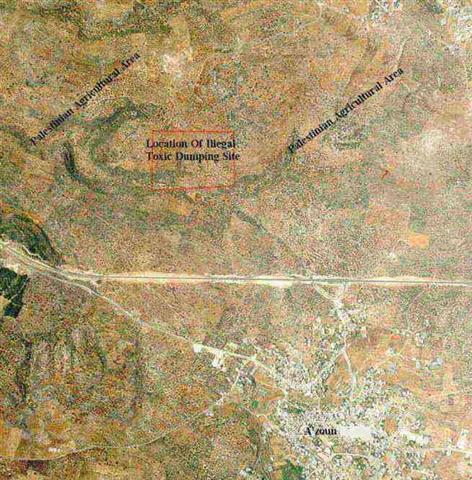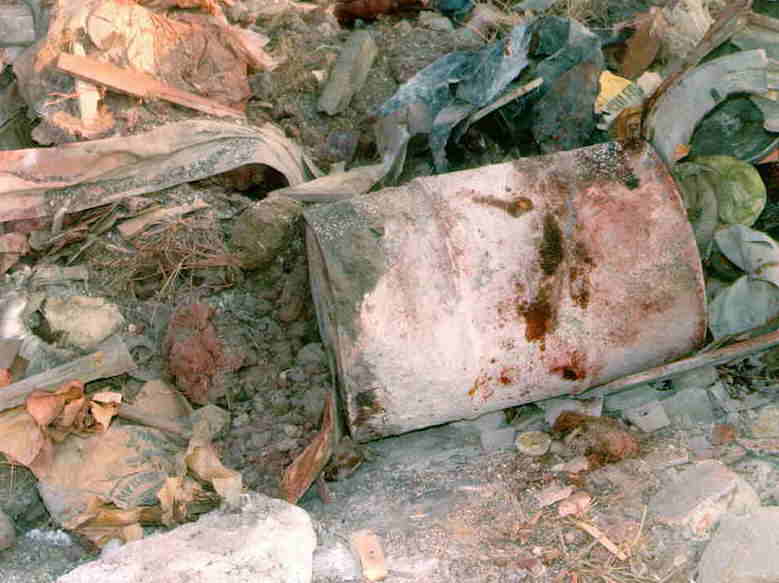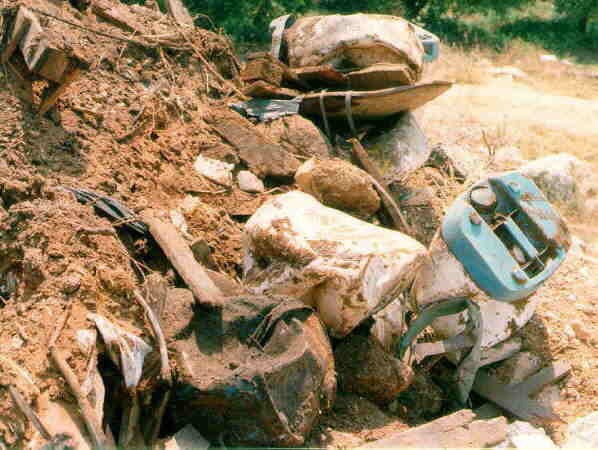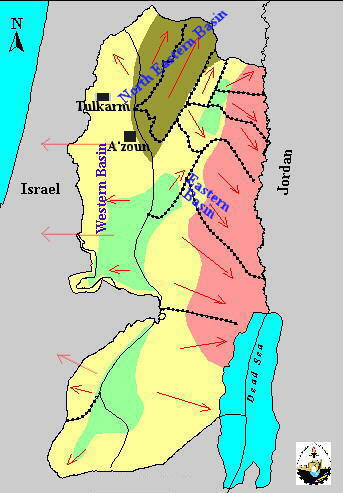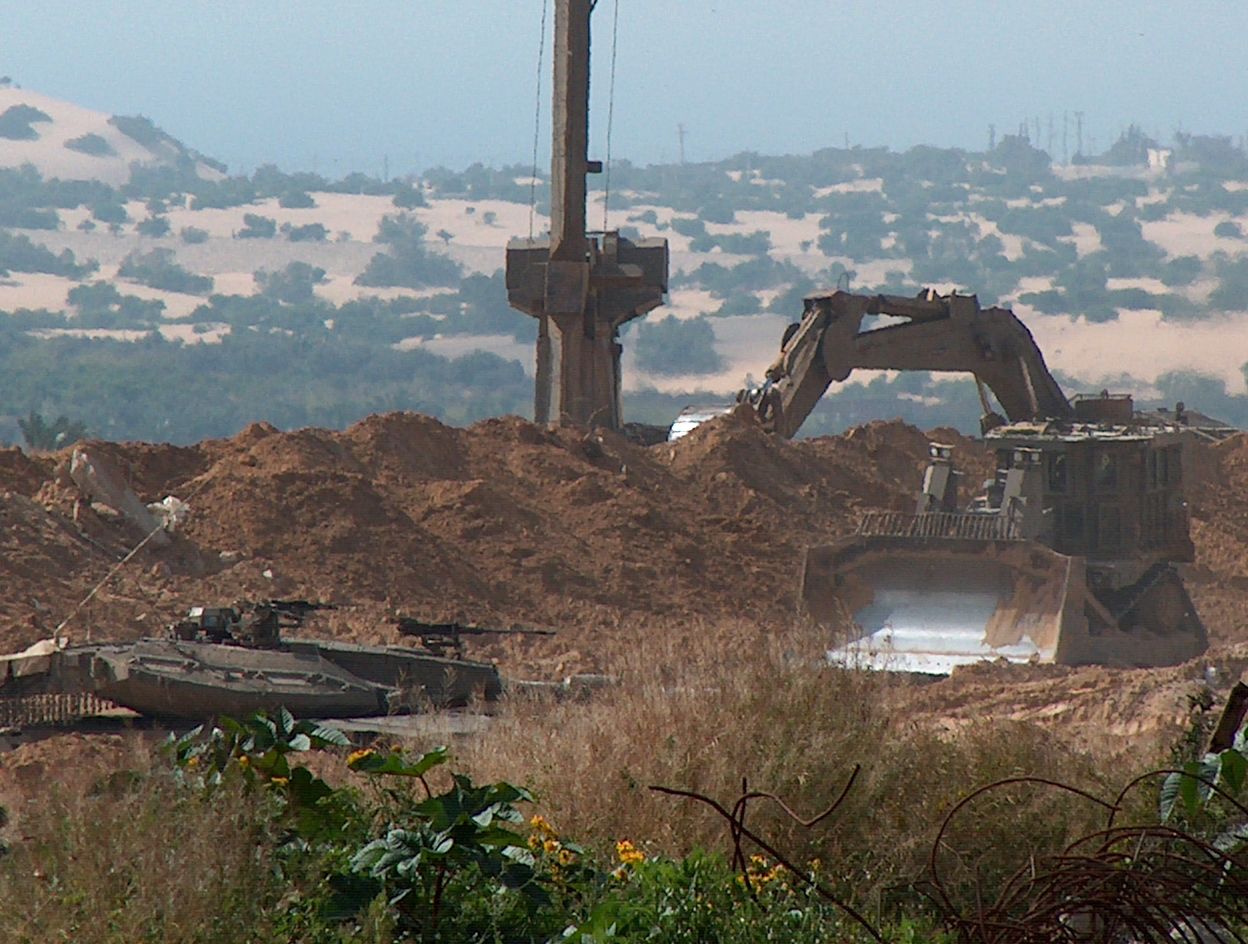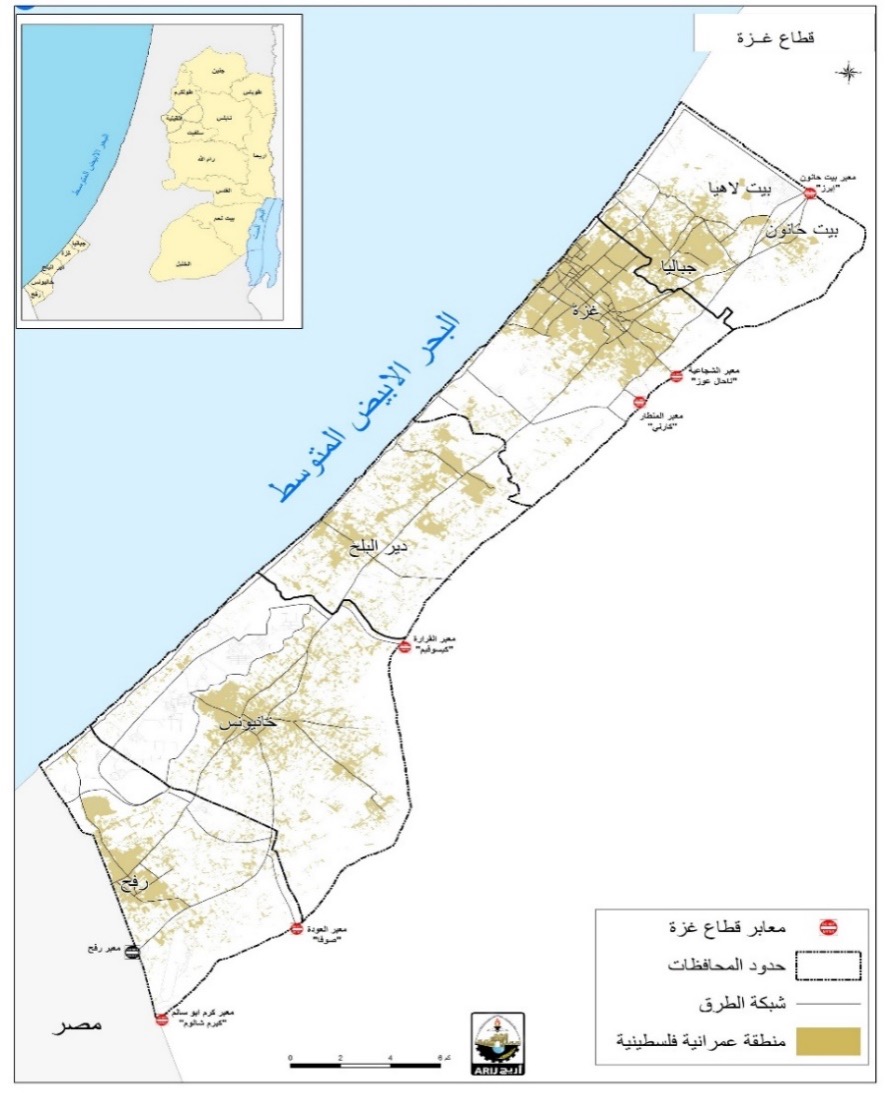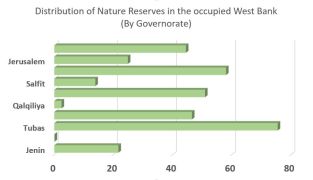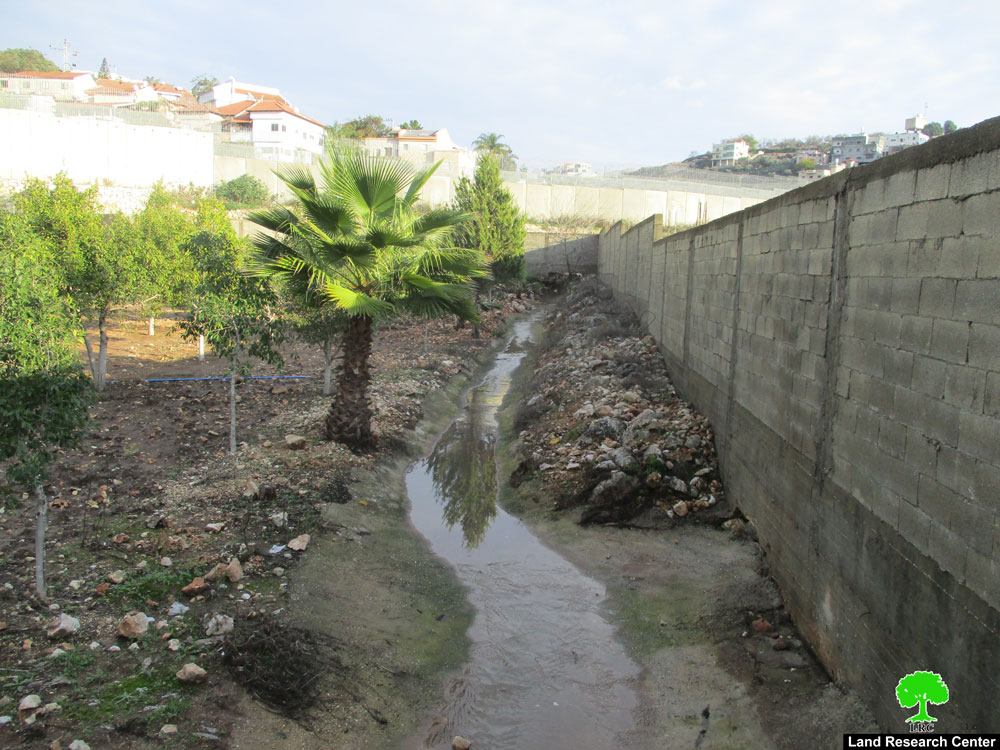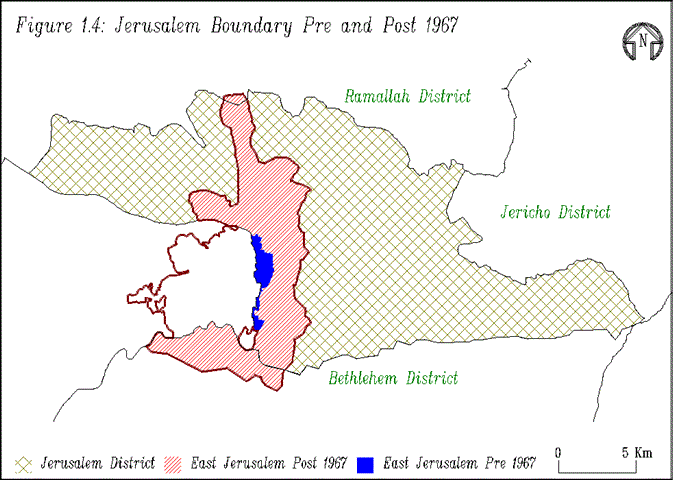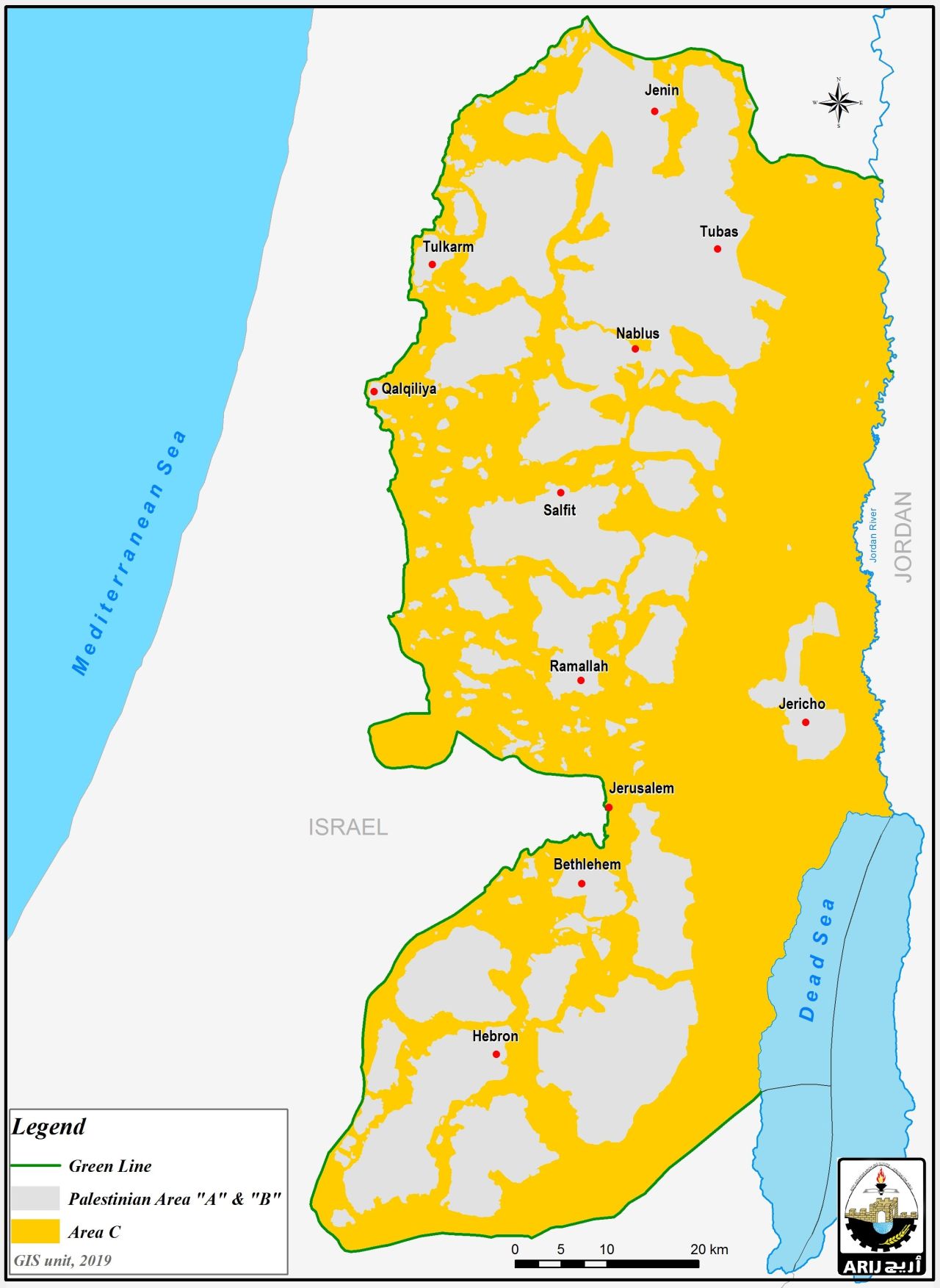Introduction
The Palestinian environment and its natural resources have been under human pressure since the Israeli occupation of 1967. The division of the West Bank into areas A, B and C with different control authority is making environmental conditions more severe as the potential for environmental protection is diminished. Along with the continued land confiscation, settlement expansion and movement restrictions of Palestinians, Israel is also polluting the West Bank and its natural resources through dumping the liquid and solid waste generated from Israeli colonies and its industrial zones into adjacent land which is usually a Palestinian village. Moreover, Israel is also illegally transferring toxic waste generated inside Israel into the West Bank.
Toxic Waste Disposal
Recently, Israel has illegally transferred 2-3 trucks filled with toxic and hazardous waste to two locations in the northern area of the West Bank. The first location is near the eastern border of the Tulkarm municipality. This area, classified as Area C, is planted with citrus trees, various irrigated vegetable crops and includes two groundwater wells. The second dumping site is located in close proximity to the residential area of A'zoun Municipality and 50 meters from their groundwater well used for drinking purpose (Figure 1).
Fig 1: Arial Photo showing the location of dumping site near A'zoun
Field observations showed that large quantities of toxic waste were buried approximately 1 meter deep (Figure 2) (Figure 3). Samples were collected and analyzed at the Department of Environmental Health at Bir Zeit University
Fig 2&3: Toxic Waste Buried near Tulkarm. &: Toxic Waste Buried near Tulkarm.
The toxic waste found in the area includes:
1. Liquid organic peroxide
2. Asbestos fibers
3. Various antibiotics
4. Organo Phosphorous materials
5. Hydrophic (lenses washing material)
6. Organic Peroxide. (A quantity of 12 barrels with 25 liters each of organic peroxide were dumped)
7. Polyethylene and Polypropylene resins
8. A 40 liter barrel of Sabion: A trade name of pesticide that is classified within the Carbamate Family.
9. Victin (under trade name of Cartomer) organo phosphate group. A quantity of 400 kg were found.
10. Activated Carbon. It is estimated from the size of the particles that the activated carbon particles are used to adsorb high toxic materials.
11. Fused Aluminum Silicate. It is estimated that these small particles were used for the adsorption and absorption of different organic materials.
12. Methomyl (Crushed Crystalline material). 30 kilograms of this highly toxic material were found.
13. Butyl-Butyl-Lurel-Lactice (Saponification and preservative Agent).
14. Potassium Complex (Green Dye)
15. Phthalic Anhydride Solid-Fired resin: A very complex polymer
16. Asphalt: Seven barrels of asphalt were found
17. Pigments materials: Different colors of pigments which are mainly composed of ferrous oxides, lead chromate, and chromoxides.
18. Used engine oil
Investigations revealed that it was planned to transfer another 50 trucks loads of toxic waste to the West Bank lands through a number of local and Israeli contractors. However, the Palestinian Environmental Authority and the Palestinian ministries of Civil Affairs, Health and Military Intelligence in addition to the high level of awareness among Palestinians have succeeded in stopping this illegal process. Currently, Palestinian security personnel are investigating suspects.
This is not the first time that has Israel attempted to illegally transfer toxic and hazardous waste to the Palestinian areas. In April 1998, Israel illegally transferred 28 barrel of hazardous and toxic waste to the Gaza Strip. This practice is an environmental and health crime against the Palestinian community and its natural resources.
Natural Resources Pollution
Water resources in the West Bank are scarce. Groundwater is the main source of water to Palestinians as well as to Israelis. The shared West Bank Aquifer between Palestinians and Israelis is the major source of water for both nations. The aquifer is divided into three basins, of which the Western Basin is the largest among the three basins. Its annual safe yield is estimated at 380 MCM. It extends from the mountains of the West Bank in the east towards the coastal plain in the west. (Figure 4) shows the schematic diagram that illustrates the water's flow path to form the Western Basin.
Fig 4: Map Showing the Shared Mountain Aquifer
The Western Basin is composed mainly of karstic and permeable limestone and dolomite interbedded with argillaceous beds of lower permeability. This limestone aquifer is subjected to contamination due to its karstic nature which is characterized by fractures allowing quick movement of pollutants.
The feed areas of the Western basin lies primarily within the West Bank while the pumping areas are both in Israel and the West Bank. Therefore, any activity, according to the Principle of Connecting Vessels, affecting one side, affects the water on the other side. So if pumping operations, uncontrolled flows of sewage or industrial waste and dumping of solid waste occur on the West Bank, it would cause serious, and most probably irreversible damage to the key source of drinking water for the areas major urban centers and environs. However, the illegal transfer of the toxic and hazardous waste to the West Bank area will result in the contamination of the Western Basin of the aquifer which will affect Palestinians as well as Israelis.
Agreements Violations by Israel
The Oslo II Palestinian-Israeli agreement outlined the possibilities for working together in the field of environmental protection. The issue of hazardous waste was stressed in several points in article 12: “Environmental protection'. Point No.10 of this article shows the importance given to the issue of hazardous wastes and the recognition that it should be dealt with in a proper way. The point states that: 'Pending the establishment of appropriate alternative sites by the Palestinian side, disposal of chemical and radioactive wastes will be only to the authorized sites in Israel, in compliance with existing procedures in these sites. The construction, operation and maintenance of the alternative facilities will follow internationally accepted guidelines, and will be implemented pursuant to the preparation of EIAs'. Under the joint Israeli-Palestinian environmental committee, the issue of hazardous waste is given a top priority status on the agenda.
Although Israel has signed and approved all international conventions dealing with the movement and disposal of toxic waste, it is violating these conventions. Israel has approved and signed the Bahrain Code of Conduct in the field of environment and it is a party to the Basel Convention on the control of transboundary movements of the hazardous wastes and their disposal. The recurrent dumping of toxic and hazardous waste in the Palestinian land violates all the signed conventions.
Palestinians are calling all international environmental, health and human rights organizations to put pressure on the Israeli government to stop these practices for the sake of our future generations.
Prepared by:
The Applied Research Institute – Jerusalem


